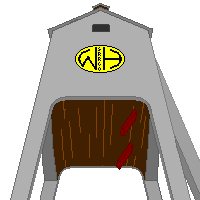

W&H MAIN YARDS: Railroad Hand Signals
By Christopher Coleman
webville@spikesys.com
Tips for mailing me
Last Updated 2-11-02
The below rules of use of hand/lantern signals are culled from the Pennsylvania,
New York Central, Baltimore and Ohio, Chesapeake and Ohio and Norfolk and Western.
rules, which are all about the same. These signals were and still are used to signal
the head end (engineer or fireman in the locomotive) from the caboose or other part
of the train. They are frequently used when cutting cars in or out of a train and
are usually given by a brakeman or conductor.
The hand or flag moved the same as the lamp, as illustrated in the following diagrams,
gives the same indication, except in the observance of rule 12a the hand or flag movement
may be above the shoulder.
- 12a: STOP - swung across the track.
- 12b: REDUCE SPEED - held horizontally at arm's legth.
- 12c: PROCEED - raised and lowered vertically.
- 12d: BACK - swung vertically in a circle at half arm's legth across the track.
- 12f: APPLY AIR BRAKES - swung horizontally above head, when standing.
- 12g: RELEASE AIR BRAKES - held vetically at arm's legth when standing.
- 12h: any object waved violently by any one on or near the track is a signal to stop.
